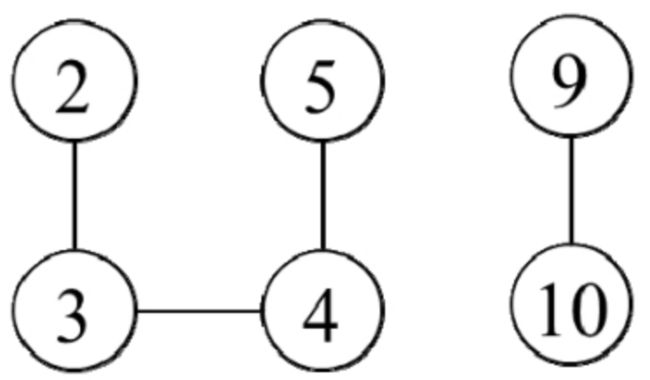- 使用numpy自定义数据集 使用tensorflow框架实现逻辑回归并保存模型,然后保存模型后再加载模型进行预
辞落山
numpytensorflow逻辑回归
1.引言逻辑回归(LogisticRegression)是一种常见的分类算法,广泛应用于二分类问题。在本篇博客中,我们将使用numpy生成一个简单的自定义数据集,并使用TensorFlow框架构建和训练逻辑回归模型。训练完成后,我们会保存模型,并演示如何加载保存的模型进行预测。2.创建自定义数据集首先,我们使用numpy生成一个简单的二分类数据集,包含两个特征和对应的标签。标签0表示负类,标签1表
- 嵌入式经典面试题之操作系统(一)
指尖动听知识库
javalinux服务器
文章目录1请你说说常用的Linux命令有哪些?2在linux中如何创建一个新的目录?3Linux中查看进程运行状态的指令、tar解压文件的参数。4在linux中,文件权限如何修改?5怎样以root权限运行某个程序?6在linux里如何查看一个进程?7在Linux里如何看带关键字日志文件?8在Linux中修改主机名的命令是什么?9简述GDB常见的调试命令?什么是条件断点?多进程下如何调试?1请你说说
- 分类算法:梯度提升树(GBT)算法原理
kkchenjj
数据挖掘机器学习算法分类数据挖掘
分类算法:梯度提升树(GBT)算法原理1.简介1.1梯度提升树的起源与发展梯度提升树(GradientBoostingTree,GBT)是一种强大的机器学习算法,它基于提升方法的原理,通过迭代地构建一系列弱分类器并组合它们来形成一个强分类器。GBT的起源可以追溯到Freund和Schapire在1996年提出的AdaBoost算法,但真正将梯度提升应用于树模型的是JeromeH.Friedman在
- 漫谈架构
部落王
随笔
1、什么是架构和架构本质在软件行业,对于什么是架构,都有很多的争论,每个人都有自己的理解。此君说的架构和彼君理解的架构未必是一回事。LInux有架构,MySQL有架构,JVM也有架构,使用Java开发、MySQL存储、跑在Linux上的业务系统也有架构,应该关注哪一个?想要清楚以上问题需要梳理几个有关系又相似的概念:系统与子系统、模块与组建、框架与架构:一、系统与子系统系统:泛指由一群有关联的个体
- 如何安全发布 CompletableFuture ?Java9新增方法分析
java
如何安全发布CompletableFuture?Java9新增方法分析本文未经允许禁止转载。JDK9中对于CompletableFuture做了新的增强,除了超时功能(orTimeout),还有面向继承、安全发布等相关方法。本文中,我们将详细分析各个新增方法,同时说明其安全发布的重要性,最后提出相关的实践原则。1.newIncompleteFuturepublicCompletableFuture
- 全面掌握 Java 排序算法:从原理到代码实现
中國移动丶移不动
排序算法java算法
全面掌握Java排序算法:从原理到代码实现一、基本概念排序算法用于将一组数据按指定顺序排列(通常是升序或降序)。在评估排序算法时,通常需要考虑以下几个方面:1.1什么是排序算法排序算法是一种对数据集合按照某种特定顺序进行重新排列的过程,主要应用在数据处理、查找优化等场景。1.2排序算法的评估标准时间复杂度:算法处理n个元素时所需的时间,例如O(n2)O(n^2)O(n2)表示随着输入量增长,处理时
- 力扣【416. 分割等和子集】详细Java题解(背包问题)
hamster2021
leetcodejava算法
首先我们可以求出数组和,当我们找到一个子集中元素的和为数组和的一半时,该就说明可以分割等和子集。对于该问题我们可以转换成背包问题,求数组里的元素装入数组和的一半大小的背包能取得的最大值。然后注意可以剪枝的地方。代码:classSolution{publicbooleancanPartition(int[]nums){//计算数组的和intsum=0;for(intnum:nums)sum+=num
- 怎么用java创建一个简单的项目
很酷的站长
java专题java开发语言
一个使用Java创建简单项目的步骤:一、创建项目结构首先,创建一个基本的项目结构。可以使用IDE(如IntelliJIDEA或Eclipse),也可以手动创建。使用IDE创建项目:打开IntelliJIDEA。选择"CreateNewProject"。选择"Java",并确保使用适当的JDK版本(例如JDK11或更高)。点击"Next",设置项目名称和项目路径。点击"Finish"完成项目创建。手
- day1-ES6学习基础语法
clock的时钟
es6学习前端
title:day1-ES6学习基础语法date:2025-01-1512:00:00tags:-前端categories:-前端ES6#一认识:什么是ES6?ES6,全称ECMAScript2015,是JavaScript语言的一个重要版本,对语言进行了许多重大改进和新增功能。ES6的引入极大地提升了JavaScript的可用性、可读性和开发效率*ECMAScript是由ECMA国际标准化组织制
- 一个简单的自适应html5导航模板
很酷的站长
html5专题csscss3前端
一个简单的HTML导航模板示例,它包含基本的导航栏结构,同时使用了CSS进行样式美化,让导航栏看起来更美观。另外,还添加了一些JavaScript代码,用于在移动端实现导航菜单的展开和收起功能。PHP网址导航模板body{font-family:Arial,sans-serif;margin:0;padding:0;background-color:#f4f4f4;}header{backgrou
- (转) [it-ebooks]电子书列表
weixin_34233618
[it-ebooks]电子书列表[2014]:LearningObjective-CbyDevelopingiPhoneGames||LeverageXcodeandObjective-CtodevelopiPhonegameshttp://it-ebooks.info/book/3544/LearningWebAppDevelopment||BuildQuicklywithProvenJavaS
- 第十一届蓝桥杯——字串排序(DP)
Dripping.
蓝桥杯练习题/试题算法
评论上有博友说这道题我的答案在蓝桥杯上只能通过7个数据点,我自己去测试了一下确实是这样的,根据一些博友在评论里提供的正确答案,我发现确实是我答案有问题,只能计算出最短长度,但字典序最小好像有些地方没有考虑完全,但是最近又很忙实在是抽不出时间来重新思考这道题,等过段时间我会重新来整理的。当然,如果你有正确的思路也希望你能够在评论里留下你的思路,万分感谢!问题描述小蓝最近学习了一些排序算法,其中冒泡排
- Java Stream API中的状态性操作与陷阱
2501_90323865
javapython开发语言个人开发
在Java编程中,StreamAPI为我们提供了一种高效且简洁的方式来处理集合数据。然而,在使用StreamAPI时,开发者常常会遇到状态性(stateful)操作和行为参数的问题。这些问题如果不加以注意,可能会导致代码的非确定性结果,甚至引发线程安全问题。本文将详细介绍状态性操作的原理、潜在问题以及如何避免这些问题,同时结合实例进行说明。一、状态性操作与无状态操作在StreamAPI中,操作可以
- Kafka 压缩算法详细介绍
王多鱼的梦想~
kafka分布式运维apache
文章目录一、Kafka压缩算法概述二、Kafka压缩的作用2.1降低网络带宽消耗2.2提高Kafka生产者和消费者吞吐量2.3减少Kafka磁盘存储占用2.4减少KafkaBroker负载2.5降低跨数据中心同步成本三、Kafka压缩的原理3.1Kafka压缩的基本原理3.2.Kafka压缩的工作流程3.3Kafka压缩的数据存储格式四、Kafka压缩方式配置4.1Kafka生产者(Produce
- Java 9模块开发:IntelliJ IDEA实战指南
2501_90323865
hystrixjava开发语言个人开发
在Java9中,模块化是一个重要的特性,它可以帮助我们更好地组织和管理代码。而IntelliJIDEA作为一个强大的集成开发环境,为Java9模块的开发提供了全面的支持。本文将通过一个实际的项目示例,详细讲解如何在IntelliJIDEA中开发和运行Java9模块。环境准备在开始之前,确保你已经安装了以下软件:Java9:Java9是开发Java9模块的基础,可以从Oracle官网下载并安装。In
- Java重要面试名词整理(二十一):SpringSecurity
正在绘制中
Java面试java面试开发语言
文章目录SpringSecurity篇概念用户授权(访问控制)JWTJWT续期问题SpringAuthorizationServer是什么OAuth2.0协议介绍角色OAuth2.0的运行流程授权模式详解客户端模式密码模式授权码模式简化模式token刷新模式OAuth2.1协议介绍授权码模式+PKCE扩展设备授权码模式拓展授权模式OpenIDConnect1.0协议SpringAuthorizat
- 力扣【1049. 最后一块石头的重量 II】Java题解(背包问题)
hamster2021
leetcodejava算法
让石头分成重量相同的两堆(尽可能相同),相撞之后剩下的石头就是最小的。进一步转化成容量为重量总喝一半的背包最多可以装多少质量的石头。这样就转化成了背包问题。最后求结果时,我们所最多能装的时dp[target],那另一半石头就是sum-dp[target],我们所求的就是(sum-dp[target])-dp[target],也就是sum-dp[target]*2。classSolution{pub
- 基于Python的Selenium详细教程总结(极简版)
weixin_41663997
pythonselenium开发语言
基于Python的Selenium详细教程总结一、PyCharm安装配置Selenium使用环境:Windows11,Python3.10.5,PyCharm2022.1.3,Selenium4.3.0需要技术:Python,HTML,CSS,JavaScriptSelenium安装:查看已安装的Python包:piplist安装Selenium4.3.0:pipinstallselenium==
- java访问数据库视图_java 访问数据库视图
金小夕
java访问数据库视图
工作多年调用视图到多次,自己写代码使用视图还是头一回,也觉得新鲜,那就开始呗,数据库系统是Oracle1我用的数据库连接客户端是Navicat,首先创建视图,其实视图就是调用表的操作,提取自己需要的数据放到视图下面,相对于java来说,可以把视图看成是特殊的表对待,这里说的特殊指的是通过hql语句调用访问数据库的时候涉及到关联表的问题.创建视图如下:然后通过myeclipse的hiberanger
- java ddd 领域事件_领域驱动设计(DDD) 领域事件
呵吁
javaddd领域事件
何时and为什么使用领域事件领域事件往往需要发布到外部系统,比如发布到另一个限界上下文中,由于这样的事件需要由订阅方处理,它将对本地和远程上下文产生深远的影响。当领域事件到达目的地后,不论是本地还是外部系统,我们通常将领域事件用于维护事件的一致性,例如聚合的其中一个原则是单个事务只允许对一个聚合实例进行修改,由此产生的其他改变。另外,领域事件还可以使远程依赖系统与本地系统保持一致,而二者解耦有助于
- 「译」2024 年的 5 个 JavaScript 安全最佳实践
泯泷
浏览器前端安全javascript安全开发语言
链接:https://thenewstack.io/5-javascript-security-best-practices-for-2024/作者:AlexanderT.Williams原标题:5JavaScriptSecurityBestPracticesfor2024网络安全已成为一个瞬息万变的战场,JavaScript应用程序的安全性也不例外。Web应用程序已成为黑客试图获取敏感数据和财务
- 深入理解Java泛型
wh柒八九
核心知识点java相关java面试
作为一个Java程序员,日常编程早就离不开泛型。泛型自从JDK1.5引进之后,真的非常提高生产力。一个简单的泛型T,寥寥几行代码,就可以让我们在使用过程中动态替换成任何想要的类型,再也不用实现繁琐的类型转换方法。文章目录概述Java泛型实现方式类型擦除带来的缺陷不支持基本数据类型运行效率运行期间无法获取泛型实际类型Java泛型历史背景本文小结概述泛型虽然我们每天都在用,但是还有很多同学可能并不了解
- 计算机毕业设计JAVA房屋租赁系统mybatis
煦洋cxsj985
mybatisjava开发语言
计算机毕业设计JAVA房屋租赁系统mybatis计算机毕业设计JAVA房屋租赁系统mybatis+源码+调试部署+系统+数据库+lw本源码技术栈:项目架构:B/S架构开发语言:Java语言开发软件:ideaeclipse前端技术:Layui、HTML、CSS、JS、JQuery等技术后端技术:JAVA运行环境:Win10、JDK1.8数据库:MySQL5.7/8.0源码地址:https://pan
- 大数据分析案例-基于逻辑回归算法构建抑郁非抑郁推文识别模型
艾派森
大数据分析案例合集机器学习人工智能python数据挖掘回归
♂️个人主页:@艾派森的个人主页✍作者简介:Python学习者希望大家多多支持,我们一起进步!如果文章对你有帮助的话,欢迎评论点赞收藏加关注+喜欢大数据分析项目的小伙伴,希望可以多多支持该系列的其他文章大数据分析案例合集
- JAVA面试题目整理
qq~374327792
javajava
JAVA基础JAVA中的几种基本数据类型是什么,各自占用多少字节。String类能被继承吗,为什么。String,Stringbuffer,StringBuilder的区别。ArrayList和LinkedList有什么区别。讲讲类的实例化顺序,比如父类静态数据,构造函数,字段,子类静态数据,构造函数,字段,当new的时候,他们的执行顺序。用过哪些Map类,都有什么区别,HashMap是线程安全的
- Oracle 导入jar包:ora-29532
two_rain
oraclejaroraclejava
加载JAVA包loadjava‐u用户名/密码‐v‐resolvejar包.java**删除JAVA包:dropjava‐u用户名/密码‐vjar包.javajava引用报错需要加权限:SQL>GRANTEXECUTEONdbms_cryptoTO用户名;SQL>GRANTEXECUTEONdbms_javaTO用户名;SQL>此处省略创建sm4_encrypt函数SQL>selectsm4_en
- Java并发CAS中的ABA问题
fragrans
JavaJava并发编程CASABA
1.ABA产生的原因CAS会导致“ABA问题”。CAS算法实现一个重要前提需要取出内存中某时刻的数据并在当下时刻比较并替换,那么在这个时间差类会导致数据的变化。比如说一个线程1从内存位置V中取出A,这时候另一个线程2也从内存中取出A,并且线程2进行了一些操作将值变成了B,然后线程2又将V位置的数据变成了A,这时候线程1进行CAS操作发现内存中仍然是A,然后线程1操作成功。只关注开始和结尾,不关心中
- 深入理解Java中的泛型编程
egzosn
java开发语言
深入理解Java中的泛型编程大家好,我是微赚淘客系统3.0的小编,也是冬天不穿秋裤,天冷也要风度的程序猿!1.泛型的基础概念在Java中,泛型编程是一种强大的编程范式,它允许我们编写可以操作各种类型的代码,而不必在每次使用时重复编写代码。泛型提供了类型安全性和代码重用的机制。1.1定义泛型类和方法登录后复制packagecn.juwatech.generics;publicclassBox{pri
- Java重要面试名词整理(二十三):DDD架构
正在绘制中
Java面试java面试架构
文章目录DDD如何应对软件核心复杂性?技术主动理解业务“刚刚好”解决问题。概念通用语言-定义上下文的含义领域和子域-确定逻辑边界领域子域限界上下文(BoundedContext)-定义领域边界的利器上下文映射图(ContextMapping)-集成三种集成方式上下文映射的种类DDD的战术设计实体和值对象实体(Entity)值对象(ValueObject)聚合和聚合根聚合聚合根领域事件(Domain
- mybatis(78/134)
一缕叶
mybatismybatis
前天学了很多,关于java的反射机制,其实跳过了new对象,然后底层生成了字节码,创建了对应的编码。手搓了一遍源码,还是比较复杂的。对于多表联立,假设2表需要1表的主键(外键),但是原本是自增字段,那么就需要在标签中设useGeneratedKeys="true"keyProperty="id",来返回对应需要的主键如:idinsertintot_carvalues(null,#{carNum},
- [星球大战]阿纳金的背叛
comsci
本来杰迪圣殿的长老是不同意让阿纳金接受训练的.........
但是由于政治原因,长老会妥协了...这给邪恶的力量带来了机会
所以......现代的地球联邦接受了这个教训...绝对不让某些年轻人进入学院
- 看懂它,你就可以任性的玩耍了!
aijuans
JavaScript
javascript作为前端开发的标配技能,如果不掌握好它的三大特点:1.原型 2.作用域 3. 闭包 ,又怎么可以说你学好了这门语言呢?如果标配的技能都没有撑握好,怎么可以任性的玩耍呢?怎么验证自己学好了以上三个基本点呢,我找到一段不错的代码,稍加改动,如果能够读懂它,那么你就可以任性了。
function jClass(b
- Java常用工具包 Jodd
Kai_Ge
javajodd
Jodd 是一个开源的 Java 工具集, 包含一些实用的工具类和小型框架。简单,却很强大! 写道 Jodd = Tools + IoC + MVC + DB + AOP + TX + JSON + HTML < 1.5 Mb
Jodd 被分成众多模块,按需选择,其中
工具类模块有:
jodd-core &nb
- SpringMvc下载
120153216
springMVC
@RequestMapping(value = WebUrlConstant.DOWNLOAD)
public void download(HttpServletRequest request,HttpServletResponse response,String fileName) {
OutputStream os = null;
InputStream is = null;
- Python 标准异常总结
2002wmj
python
Python标准异常总结
AssertionError 断言语句(assert)失败 AttributeError 尝试访问未知的对象属性 EOFError 用户输入文件末尾标志EOF(Ctrl+d) FloatingPointError 浮点计算错误 GeneratorExit generator.close()方法被调用的时候 ImportError 导入模块失
- SQL函数返回临时表结构的数据用于查询
357029540
SQL Server
这两天在做一个查询的SQL,这个SQL的一个条件是通过游标实现另外两张表查询出一个多条数据,这些数据都是INT类型,然后用IN条件进行查询,并且查询这两张表需要通过外部传入参数才能查询出所需数据,于是想到了用SQL函数返回值,并且也这样做了,由于是返回多条数据,所以把查询出来的INT类型值都拼接为了字符串,这时就遇到问题了,在查询SQL中因为条件是INT值,SQL函数的CAST和CONVERST都
- java 时间格式化 | 比较大小| 时区 个人笔记
7454103
javaeclipsetomcatcMyEclipse
个人总结! 不当之处多多包含!
引用 1.0 如何设置 tomcat 的时区:
位置:(catalina.bat---JAVA_OPTS 下面加上)
set JAVA_OPT
- 时间获取Clander的用法
adminjun
Clander时间
/**
* 得到几天前的时间
* @param d
* @param day
* @return
*/
public static Date getDateBefore(Date d,int day){
Calend
- JVM初探与设置
aijuans
java
JVM是Java Virtual Machine(Java虚拟机)的缩写,JVM是一种用于计算设备的规范,它是一个虚构出来的计算机,是通过在实际的计算机上仿真模拟各种计算机功能来实现的。Java虚拟机包括一套字节码指令集、一组寄存器、一个栈、一个垃圾回收堆和一个存储方法域。 JVM屏蔽了与具体操作系统平台相关的信息,使Java程序只需生成在Java虚拟机上运行的目标代码(字节码),就可以在多种平台
- SQL中ON和WHERE的区别
avords
SQL中ON和WHERE的区别
数据库在通过连接两张或多张表来返回记录时,都会生成一张中间的临时表,然后再将这张临时表返回给用户。 www.2cto.com 在使用left jion时,on和where条件的区别如下: 1、 on条件是在生成临时表时使用的条件,它不管on中的条件是否为真,都会返回左边表中的记录。
- 说说自信
houxinyou
工作生活
自信的来源分为两种,一种是源于实力,一种源于头脑.实力是一个综合的评定,有自身的能力,能利用的资源等.比如我想去月亮上,要身体素质过硬,还要有飞船等等一系列的东西.这些都属于实力的一部分.而头脑不同,只要你头脑够简单就可以了!同样要上月亮上,你想,我一跳,1米,我多跳几下,跳个几年,应该就到了!什么?你说我会往下掉?你笨呀你!找个东西踩一下不就行了吗?
无论工作还
- WEBLOGIC事务超时设置
bijian1013
weblogicjta事务超时
系统中统计数据,由于调用统计过程,执行时间超过了weblogic设置的时间,提示如下错误:
统计数据出错!
原因:The transaction is no longer active - status: 'Rolling Back. [Reason=weblogic.transaction.internal
- 两年已过去,再看该如何快速融入新团队
bingyingao
java互联网融入架构新团队
偶得的空闲,翻到了两年前的帖子
该如何快速融入一个新团队,有所感触,就记下来,为下一个两年后的今天做参考。
时隔两年半之后的今天,再来看当初的这个博客,别有一番滋味。而我已经于今年三月份离开了当初所在的团队,加入另外的一个项目组,2011年的这篇博客之后的时光,我很好的融入了那个团队,而直到现在和同事们关系都特别好。大家在短短一年半的时间离一起经历了一
- 【Spark七十七】Spark分析Nginx和Apache的access.log
bit1129
apache
Spark分析Nginx和Apache的access.log,第一个问题是要对Nginx和Apache的access.log文件进行按行解析,按行解析就的方法是正则表达式:
Nginx的access.log解析正则表达式
val PATTERN = """([^ ]*) ([^ ]*) ([^ ]*) (\\[.*\\]) (\&q
- Erlang patch
bookjovi
erlang
Totally five patchs committed to erlang otp, just small patchs.
IMO, erlang really is a interesting programming language, I really like its concurrency feature.
but the functional programming style
- log4j日志路径中加入日期
bro_feng
javalog4j
要用log4j使用记录日志,日志路径有每日的日期,文件大小5M新增文件。
实现方式
log4j:
<appender name="serviceLog"
class="org.apache.log4j.RollingFileAppender">
<param name="Encoding" v
- 读《研磨设计模式》-代码笔记-桥接模式
bylijinnan
java设计模式
声明: 本文只为方便我个人查阅和理解,详细的分析以及源代码请移步 原作者的博客http://chjavach.iteye.com/
/**
* 个人觉得关于桥接模式的例子,蜡笔和毛笔这个例子是最贴切的:http://www.cnblogs.com/zhenyulu/articles/67016.html
* 笔和颜色是可分离的,蜡笔把两者耦合在一起了:一支蜡笔只有一种
- windows7下SVN和Eclipse插件安装
chenyu19891124
eclipse插件
今天花了一天时间弄SVN和Eclipse插件的安装,今天弄好了。svn插件和Eclipse整合有两种方式,一种是直接下载插件包,二种是通过Eclipse在线更新。由于之前Eclipse版本和svn插件版本有差别,始终是没装上。最后在网上找到了适合的版本。所用的环境系统:windows7JDK:1.7svn插件包版本:1.8.16Eclipse:3.7.2工具下载地址:Eclipse下在地址:htt
- [转帖]工作流引擎设计思路
comsci
设计模式工作应用服务器workflow企业应用
作为国内的同行,我非常希望在流程设计方面和大家交流,刚发现篇好文(那么好的文章,现在才发现,可惜),关于流程设计的一些原理,个人觉得本文站得高,看得远,比俺的文章有深度,转载如下
=================================================================================
自开博以来不断有朋友来探讨工作流引擎该如何
- Linux 查看内存,CPU及硬盘大小的方法
daizj
linuxcpu内存硬盘大小
一、查看CPU信息的命令
[root@R4 ~]# cat /proc/cpuinfo |grep "model name" && cat /proc/cpuinfo |grep "physical id"
model name : Intel(R) Xeon(R) CPU X5450 @ 3.00GHz
model name :
- linux 踢出在线用户
dongwei_6688
linux
两个步骤:
1.用w命令找到要踢出的用户,比如下面:
[root@localhost ~]# w
18:16:55 up 39 days, 8:27, 3 users, load average: 0.03, 0.03, 0.00
USER TTY FROM LOGIN@ IDLE JCPU PCPU WHAT
- 放手吧,就像不曾拥有过一样
dcj3sjt126com
内容提要:
静悠悠编著的《放手吧就像不曾拥有过一样》集结“全球华语世界最舒缓心灵”的精华故事,触碰生命最深层次的感动,献给全世界亿万读者。《放手吧就像不曾拥有过一样》的作者衷心地祝愿每一位读者都给自己一个重新出发的理由,将那些令你痛苦的、扛起的、背负的,一并都放下吧!把憔悴的面容换做一种清淡的微笑,把沉重的步伐调节成春天五线谱上的音符,让自己踏着轻快的节奏,在人生的海面上悠然漂荡,享受宁静与
- php二进制安全的含义
dcj3sjt126com
PHP
PHP里,有string的概念。
string里,每个字符的大小为byte(与PHP相比,Java的每个字符为Character,是UTF8字符,C语言的每个字符可以在编译时选择)。
byte里,有ASCII代码的字符,例如ABC,123,abc,也有一些特殊字符,例如回车,退格之类的。
特殊字符很多是不能显示的。或者说,他们的显示方式没有标准,例如编码65到哪儿都是字母A,编码97到哪儿都是字符
- Linux下禁用T440s,X240的一体化触摸板(touchpad)
gashero
linuxThinkPad触摸板
自打1月买了Thinkpad T440s就一直很火大,其中最让人恼火的莫过于触摸板。
Thinkpad的经典就包括用了小红点(TrackPoint)。但是小红点只能定位,还是需要鼠标的左右键的。但是自打T440s等开始启用了一体化触摸板,不再有实体的按键了。问题是要是好用也行。
实际使用中,触摸板一堆问题,比如定位有抖动,以及按键时会有飘逸。这就导致了单击经常就
- graph_dfs
hcx2013
Graph
package edu.xidian.graph;
class MyStack {
private final int SIZE = 20;
private int[] st;
private int top;
public MyStack() {
st = new int[SIZE];
top = -1;
}
public void push(i
- Spring4.1新特性——Spring核心部分及其他
jinnianshilongnian
spring 4.1
目录
Spring4.1新特性——综述
Spring4.1新特性——Spring核心部分及其他
Spring4.1新特性——Spring缓存框架增强
Spring4.1新特性——异步调用和事件机制的异常处理
Spring4.1新特性——数据库集成测试脚本初始化
Spring4.1新特性——Spring MVC增强
Spring4.1新特性——页面自动化测试框架Spring MVC T
- 配置HiveServer2的安全策略之自定义用户名密码验证
liyonghui160com
具体从网上看
http://doc.mapr.com/display/MapR/Using+HiveServer2#UsingHiveServer2-ConfiguringCustomAuthentication
LDAP Authentication using OpenLDAP
Setting
- 一位30多的程序员生涯经验总结
pda158
编程工作生活咨询
1.客户在接触到产品之后,才会真正明白自己的需求。
这是我在我的第一份工作上面学来的。只有当我们给客户展示产品的时候,他们才会意识到哪些是必须的。给出一个功能性原型设计远远比一张长长的文字表格要好。 2.只要有充足的时间,所有安全防御系统都将失败。
安全防御现如今是全世界都在关注的大课题、大挑战。我们必须时时刻刻积极完善它,因为黑客只要有一次成功,就可以彻底打败你。 3.
- 分布式web服务架构的演变
自由的奴隶
linuxWeb应用服务器互联网
最开始,由于某些想法,于是在互联网上搭建了一个网站,这个时候甚至有可能主机都是租借的,但由于这篇文章我们只关注架构的演变历程,因此就假设这个时候已经是托管了一台主机,并且有一定的带宽了,这个时候由于网站具备了一定的特色,吸引了部分人访问,逐渐你发现系统的压力越来越高,响应速度越来越慢,而这个时候比较明显的是数据库和应用互相影响,应用出问题了,数据库也很容易出现问题,而数据库出问题的时候,应用也容易
- 初探Druid连接池之二——慢SQL日志记录
xingsan_zhang
日志连接池druid慢SQL
由于工作原因,这里先不说连接数据库部分的配置,后面会补上,直接进入慢SQL日志记录。
1.applicationContext.xml中增加如下配置:
<bean abstract="true" id="mysql_database" class="com.alibaba.druid.pool.DruidDataSourc
